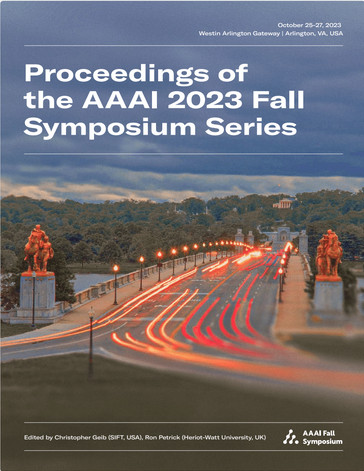Building Intelligent Systems by Combining Machine Learning and Automated Commonsense Reasoning
DOI:
https://doi.org/10.1609/aaaiss.v2i1.27687Keywords:
Large Language Models, Commonsense Reasoning, Answer Set Programming, Conversational AgentAbstract
We present an approach to building systems that emulate human-like intelligence. Our approach uses machine learning technology (including generative AI systems) to extract knowledge from pictures, text, etc., and represents it as (pre-defined) predicates. Next, we use the s(CASP) automated commonsense reasoning system to check the consistency of this extracted knowledge and reason over it in a manner very similar to how a human would do it. We have used our approach for building systems for visual question answering, task-specific chatbots that can ``understand" human dialogs and interactively talk to them, and autonomous driving systems that rely on commonsense reasoning. Essentially, our approach emulates how humans process knowledge where they use sensing and pattern recognition to gain knowledge (Kahneman's System 1 thinking, akin to using a machine learning model), and then use reasoning to draw conclusions, generate response, or take actions (Kahneman's System 2 thinking, akin to automated reasoning).Downloads
Published
2024-01-22
How to Cite
Gupta, G., Zeng, Y., Rajasekaran, A., Padalkar, P., Kimbrell, K., Basu, K., Shakerin, F., Salazar, E., & Arias, J. (2024). Building Intelligent Systems by Combining Machine Learning and Automated Commonsense Reasoning. Proceedings of the AAAI Symposium Series, 2(1), 272-276. https://doi.org/10.1609/aaaiss.v2i1.27687
Issue
Section
Integration of Cognitive Architectures and Generative Models

